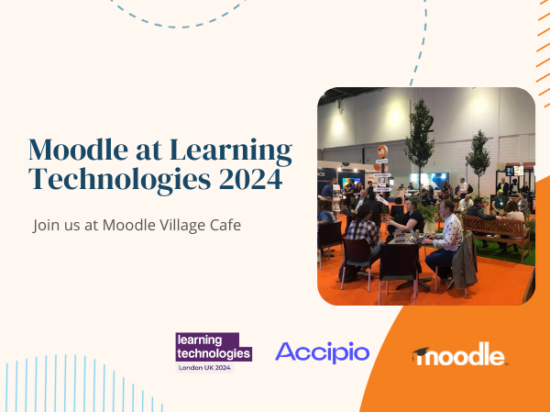How can Moodle be used as a solution to deliver an institution-wide managed learning pathway within a community of researchers?
This is the challenge a team at Cranfield University faced when they were tasked with designing and implementing an online course using Moodle.
Cranfield University wanted to transform face-to-face workshops into a managed online course which would incorporate all of their four colleges.
The course, titled, “getting published in ten easy steps” had to be flexible, but structured and meets the objective of teaching students how to improve their research publication standards.
Speaking at MoodleMoot UK & Ireland 2017, Aurelie Soulier (Learning Technologist at the University) explained how the team achieved their goal and the lessons they learnt in the process.
Aurelie began her presentation by explaining how the team separated the task into different properties of:
Format
- Unlike previous Moodle courses designed they’ve designed, “getting published in ten easy steps” would not be created using collapsible courses. Instead, it will be in a grid format, previously only used for student testing.
- The format highlighted the importance of defining a course audience early as students have different expectations of what the course should look like. This realisation inspired the name of Aurelie’s MootIEUK presentation; “square pegs into round holes”.
Theme
- The course was initially designed for Moodle 2.9, however the team decided to switch to an “essential” Moodle theme. The course was created on Moodle 3.1.
Design
- A grid design was selected to improve the visual impact of the course. This design would also benefit students, giving them clear expectations on what to expect each step of the course.
Enrolment
- A challenge the team faced was how to develop a motivating course. One way they thought of was controlling access to the course via enrolment restrictions. So, an enrollment key was created, so only certain participants could access and complete the course.
- This enrolment key was suspended halfway through the course, giving users a community sense as participants were completing certain stages simultaneously.
Activities
- Aurelie explained in her presentation how her team kept participants motivated by using a “persona” . The automated “persona” reminded participants about upcoming activities within their course and encouraged them to stay on task.
- Videos, audio files, summaries and blogs were used to provide many activities suitable to participants’ learning styles.
Feedback
- Participants were encouraged to provide feedback via an online questionnaire and face to face, giving them team valuable feedback for what worked and what needed improvements.
- The feedback showed that the team has achieved their goal. Participants enjoyed the integration with subject matter experts, the sharing of best practices in forums, the usability of the grid format and the enrolment system.
- The team also took away lessons for improvements – videos not playing in embedded label and creating a random screen display – and created solutions. In this case, by using a picture linked to the media streaming server URL.
You can watch the full presentation on this great Moodle success project story by watching Aurelie’s video from MoodleMoot UK & Ireland 2017.



